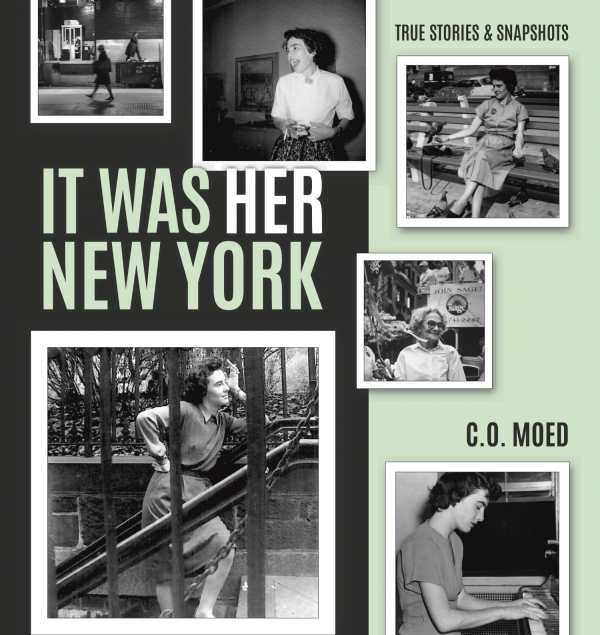It Was Her New York
True Stories and Snapshots
A vibrant memoir, It Was Her New York weaves a tangled web of cultural memories.
C. O. Moed’s It Was Her New York is a moving, unconventional memoir that blends personal and cultural history to explore the process and aftermath of loss.
Moed cared for her aging mother, Florence, a classically trained pianist who charmed those around her with her tenacity, wit, and disgruntled New York charm. At the same time, she documented New York City in a period of rapid change. Her book blurs the boundaries between personal and collective history, expanding the cultural record with rich, intimate sensory details. The book’s vignettes are accompanied by full-color photographs that are at once illustrative and expansive, adding another dimension to its exploration of family, history, memory, and grief.
There’s a biographical element to the book as well, with Moed introducing Florence as someone born to and raised by Jewish parents in Manhattan’s Lower East Side. She worked day and night as a waitress to save up for her own Steinway piano, a purchase that led her to Juilliard’s music school where she wowed professors and fellow students with her skill and “compelling rhythmic force.” In her youth, Florence also met a woman with whom she began a passionate, tumultuous love affair; they decided to give up on their then-illicit life and reenter heterosexual society, though. After marrying a man and raising two children, Florence divorced her husband and began living life on her own terms, teaching piano lessons and going for daily swims in the frigid waters of Coney Island.
In vibrant prose, Moed tells her mother’s story with attention and care, documenting her fall into dementia and the perils of old age. She also includes snapshots of her life beyond the time spent caring for her mother, exploring her work and social life and allowing friends and strangers to contribute their own stories. Honest, humorous, and engaging, the book explores the parallels between losing a parent and witnessing the erosion of one’s city and neighborhood due to gentrification and rapid cultural and economic change.
New York City is a central character in the book—in particular the New York of Moed’s childhood, on whose lively, perilous city streets she ran free, benefiting from the diverse and distinctive population of immigrants, artists, and lower-class workers. Although the connections between personal and urban history, including in terms of loss and grief, are underexplored in the text, the nonlinear and fragmented storytelling leads to a tangled but comprehensive web of cultural memory.
Made up of a series of vignettes accompanied by full-color photographs, the nontraditional memoir It Was Her New York is an ode to a bygone city and an enduring testament to an unorthodox life on the Lower East Side.
Reviewed by
Bella Moses
Disclosure: This article is not an endorsement, but a review. The publisher of this book provided free copies of the book and paid a small fee to have their book reviewed by a professional reviewer. Foreword Reviews and Clarion Reviews make no guarantee that the publisher will receive a positive review. Foreword Magazine, Inc. is disclosing this in accordance with the Federal Trade Commission’s 16 CFR, Part 255.

